Recollections of the Past 30 years pursuing Coelacanths
Jerome Hamlin, creator dinofish.com
I came to call the trips to the South Pacific by the designations SoPac I, SoPac II, and so on. SoPac meant South Pacific. After the return from SoPac I, I published the information on the dinofish site and very soon had an email from an Australian (Tomlinson) that appeared to validate what I suspected. He claimed that one of his crew had seen a live coelacanth while the crew member snorkeled. The crew member later confirmed what he had seen was a coelacanth at the science museum in Sydney. He did not say where this was, but he hoped to confirm it on future trips. I replied, but there was no further correspondence. There have been other reports of shallow water sightings of coelacanths (in Madagascar and Comoros), but non confirmed by photographs, other than the caught fish in the Comoros that have been released in shallow water for photography purposes. The report could not be dismissed out of hand.
By 2011, I had received no further information or feedback from the Solomons, so I organized a revisit. However, this time I would expand the research trip to include Papua New Guinea, just to the north and east of the Solomons. There was reason to believe that populations of coelacanths, if they were indeed in the Solomons, might stretch across the top of New Guinea, connecting with the Indonesian groups to the west. My partner, Diana, came with me on what came to be called SoPac II. This time I carried new and improved digital cameras good for both video and stills, including a Canon 5d Mark II and a small back up Canon G12 with an underwater housing.
We met up in Port Morseby and stayed at the Airways Hotel. It was not my first time in New Guinea. Decades earlier in the mid 60's, as a student I had been there and remembered taking a DC3 with an open door up to the highlands. When I mentioned this to the manager, he said, "Oh, we still have that plane. It's now a conference room at the hotel!"

The DC3 I once flew on to the highlands is now a conference room mounted on a pylon attached to the hotel!
We were headed for the north coast, but thought having come so far we should spend a little time exploring the highlands first. A Dash 8 took us uneventfully to Goroka where we saw the mudmen I had seen decades before. The performance done just for us was great. I filmmed "stoneage" firemaking, a clip wich has had more than 75k views on Youtube. Later we bought some trinkets. Diana bought a necklace of animal teeth which on later inspection turned out to be plastic.
.jpg)
Asaro Valley Mudmen.
I hired a van and driver to drive us all the way to Tari in the Southern Highlands where we hoped to see the spectacular birds of paradise known to inhabit Tari pass. As we were leaving Goroka for Tari several newcomers climbed on board the van all claiming to be mechanics to help us on the trip. I realized I was providing free transport for locals, something that has happened many times, and is ok by me if our safety is not endangered. At Mt Hagan we stayed in a hotel whose compound was locked up tight at night. Outside the walls there was howing and screaming in the dark that lasted untill dawn.
On the way to Tari were scenic views whose subtle beauty is beyond my description, but with my new camera, I did my best, to catch the sights.
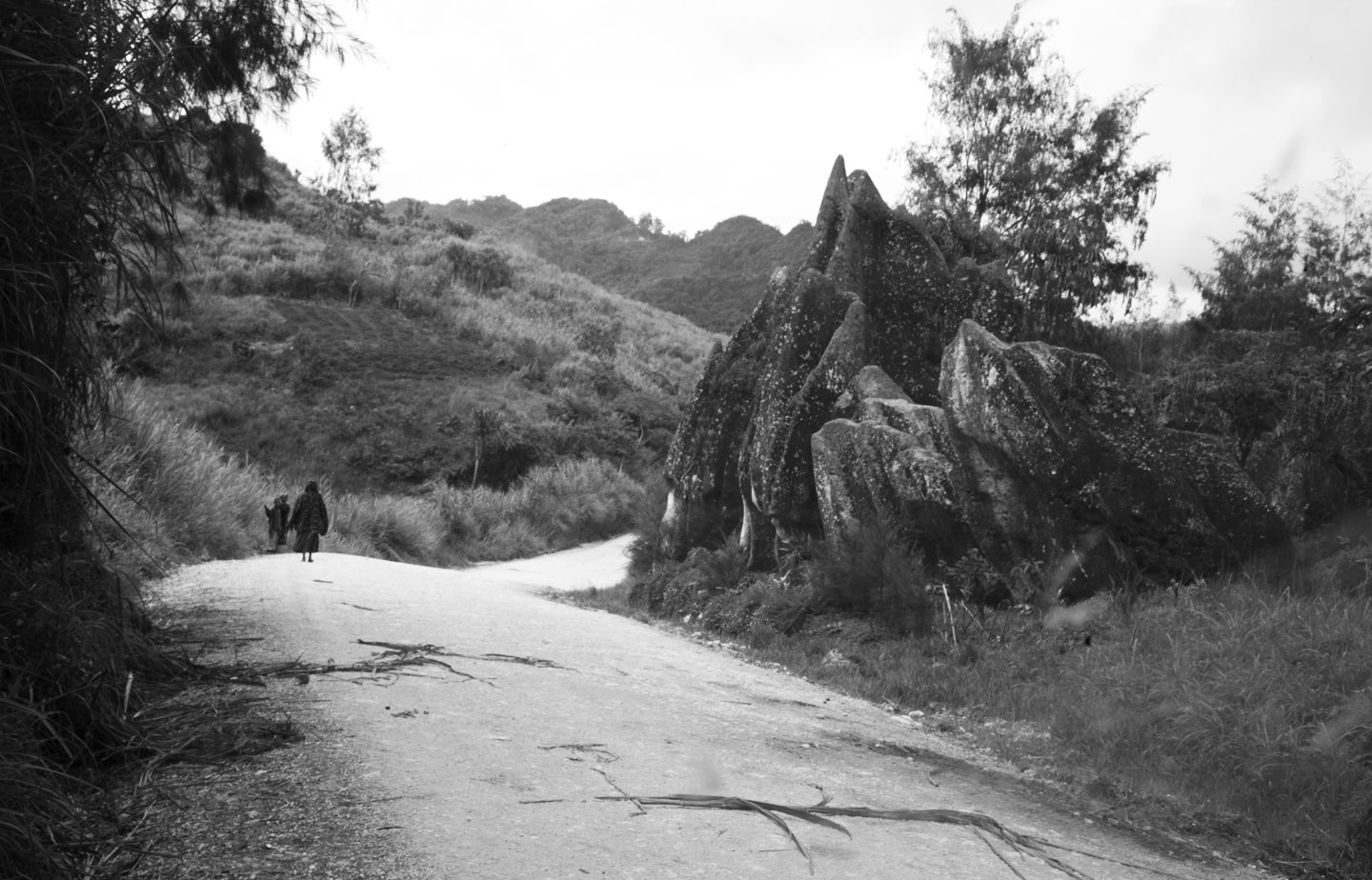
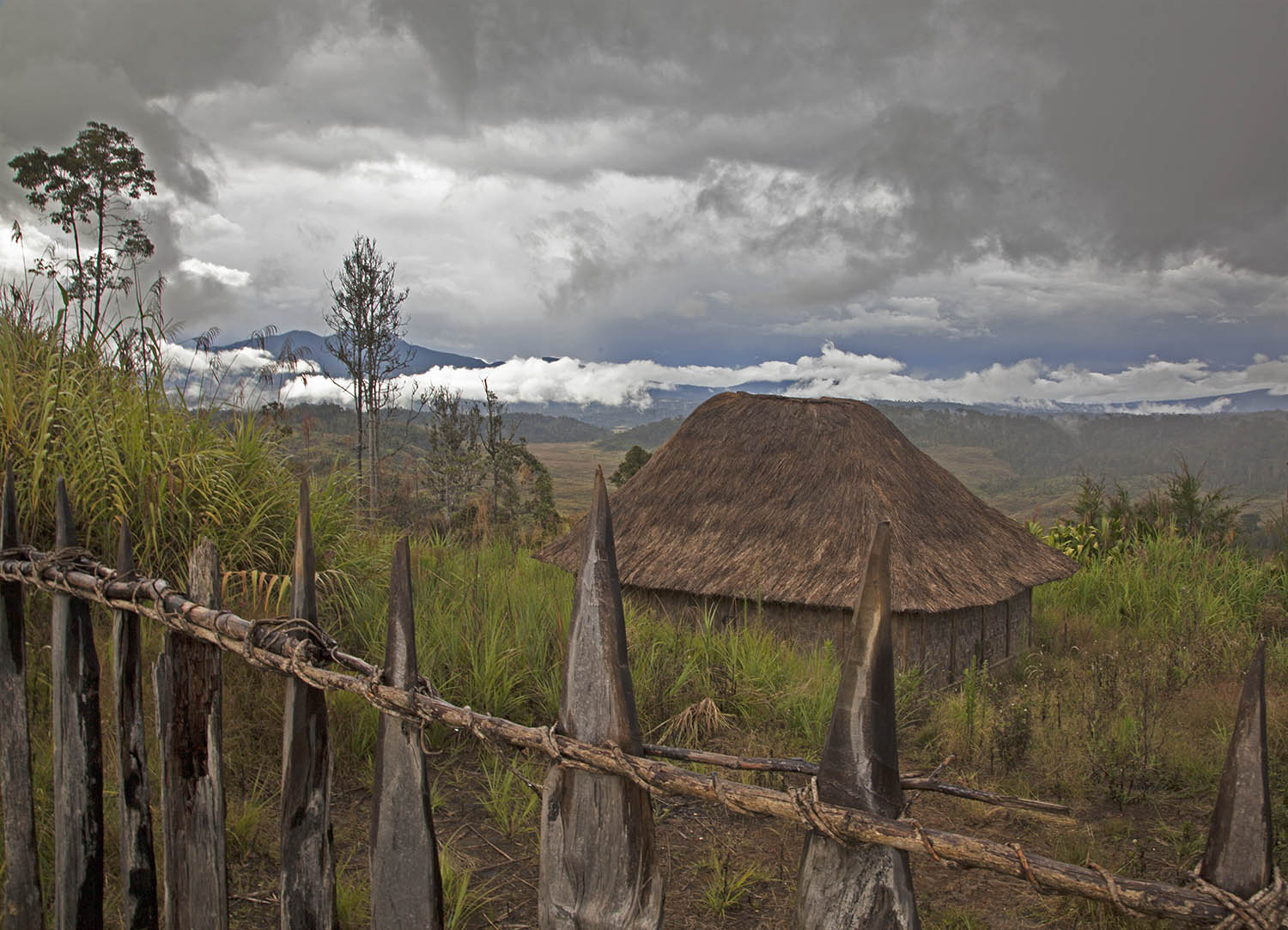
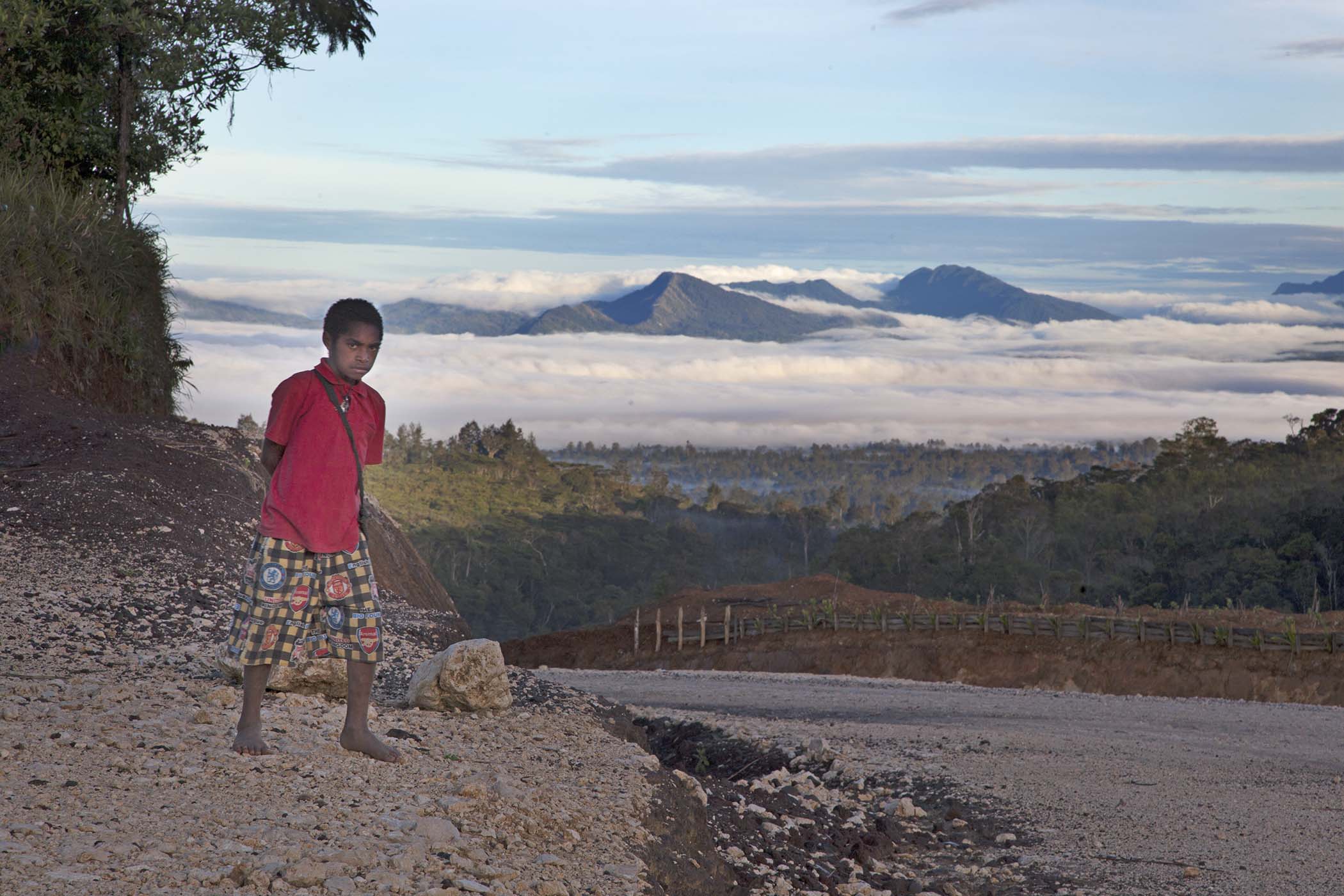
At Tari our driver let us off at a small hotel and went on to stay with friends. There was no one at the hotel. Eventually an attendant showed up and asked me for money so he could buy keroscene to run the stove. The birds of paradise disappointed us at Tari (eventually we saw one with a broken tail, the tail being the main feature.) However, we stumbled upon a public meeting featuring the dancing Huli Wigmen, quite a surprise and a photographer's thrill.
.jpg)
Huli Wigmen at Tari
Getting back was a challenge. There had been a vehicle accident in which a woman of one tribe was injured. Members of her tribe dragged the driver out of the car, beat him up and he later died. Now his tribe had established an armed road block closing off the road back to Mt Hagen. At our drivers suggestion he arranged an escort car for us with a local "bigwig", and we left at 3:00 a.m to run the roadblock. When we reached it, the gun toting road blockers were all asleep and we were on our way. From Mt Hagen we flew on to Wewak and the north coast of PNG.
From the airstrip in Wewak, we lugged our gear over to a small hotel on the water which became our base of operations.I began showing our info sheet with the three fish. Wewak is the gateway for trips on the Sepik River. We made a river excursion which put us in touch with guide and tourism director Alois Mateus, a well known man in Wewak. Alois drove us to Kaup a remote fishing village on the coast, and there various fishermen confirmed that they had caught coelacanths as shown on the sheet. But they had no remains to show us. They said if I gave them some money for fuel they would go out and catch another. I fell for it, couldn't take the chance not to, but in the follwing days we had no reports of "another one" being caught.
In the course of interviewing fishermen, there was always the possibility that they misidentified the fish. There was the possibility that out of courtesy they were telling you what you wanted to hear. And there was the possibility that they were intentionaly misleading you for financial gain, which could simply mean keeping you around spending money. Our trip out to Muschu Island might have been an example of the last case. I showed George, the bannana boat opeator and our host on the island, the fish sheet. As Diana provided details his story seemed to change to incorporate each new detail. Yes, he had them there, and pretty soon he had them swimming right off the point. After landing, we encountered a fisherman and his wife, who also seemed to remember catching one. Their story developed further as George spoke to them in pigeon. We left the Wewak area with no solid evidence of coelacanths.
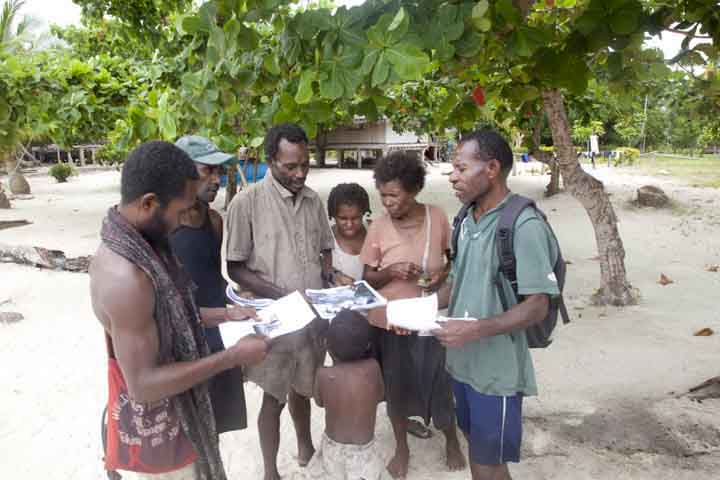
Interviewing fishermen at Muschu Island, George at right.
Our next flight took us to Rabaul on the island of New Brtain off the northeast coast of the PNG mainland. Rabaul had been a major Japanese base in WWII and still had many tunnels and war ruins. It had also been ruined in 1994 by a volcanic eruption. The Rabaul Hotel became our base. I showed the fish sheet to one and all with no solid claims.

Tavurvur volcano, one of the destroyers of Rabaul
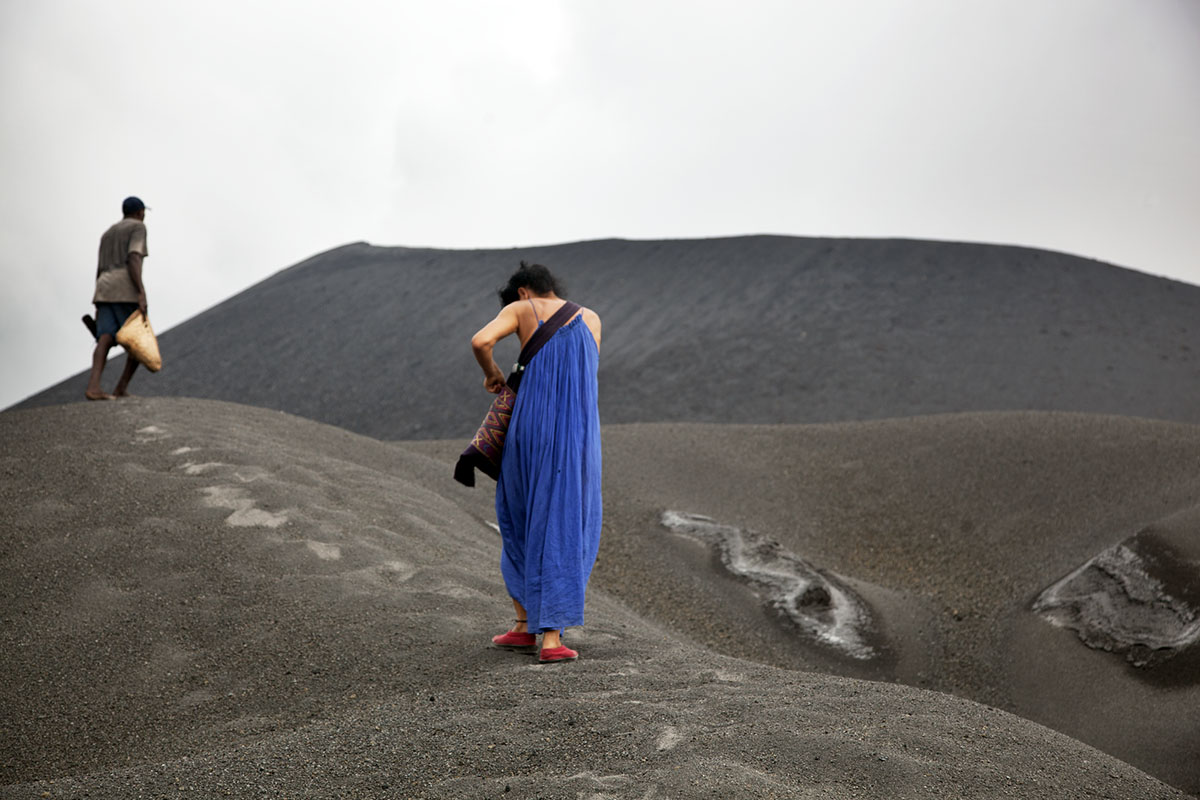
Diana and guide ascending Tavurvur
We travelled over to the Duke of York Islands by bannana boat, an isolated string of islets. Nothing encouraging. We flew to Kavieng, New Ireland next door to New Britain. From there we went by a series of bannana boat jumps out to the tip of New Hanover to visit the village of Au. I had my hopes up for Au as it was so remote, they could easily be catching coelacanths and calling them by another name with no one realizing what they really were. But the good people and teachers at Au had never seen the depicted fish on my sheet. While we were there, the airport at Kavieng shut down because the landholders had not been paid rent by the government. We crossed over to Rabaul by bannana boat, and then flew back to Port Morseby.
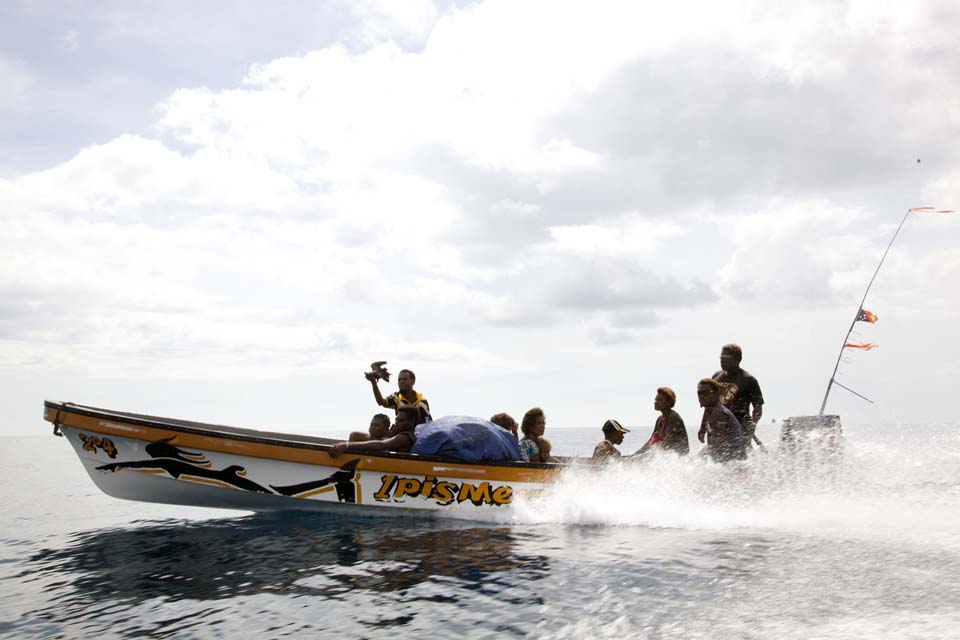
Frustrated, but high on all we had seen and done, we now flew to the Solomons a few hours away by jet. Back in Honiara, I decided we would go to a different area this time, than where I'd visited in 2007. We flew up to Choiseul Province and began interviewing fishermen, teachers, and anyone else who showed interest, which was basically everyone in the village. I got positive responses again, and some very convincing. Over and over, one fisherman insisted he had caught a fish with that same tail. But no evidence. We even searched the trash heap behind his house for a scale. Well, the dog ate the leftovers we were advised.
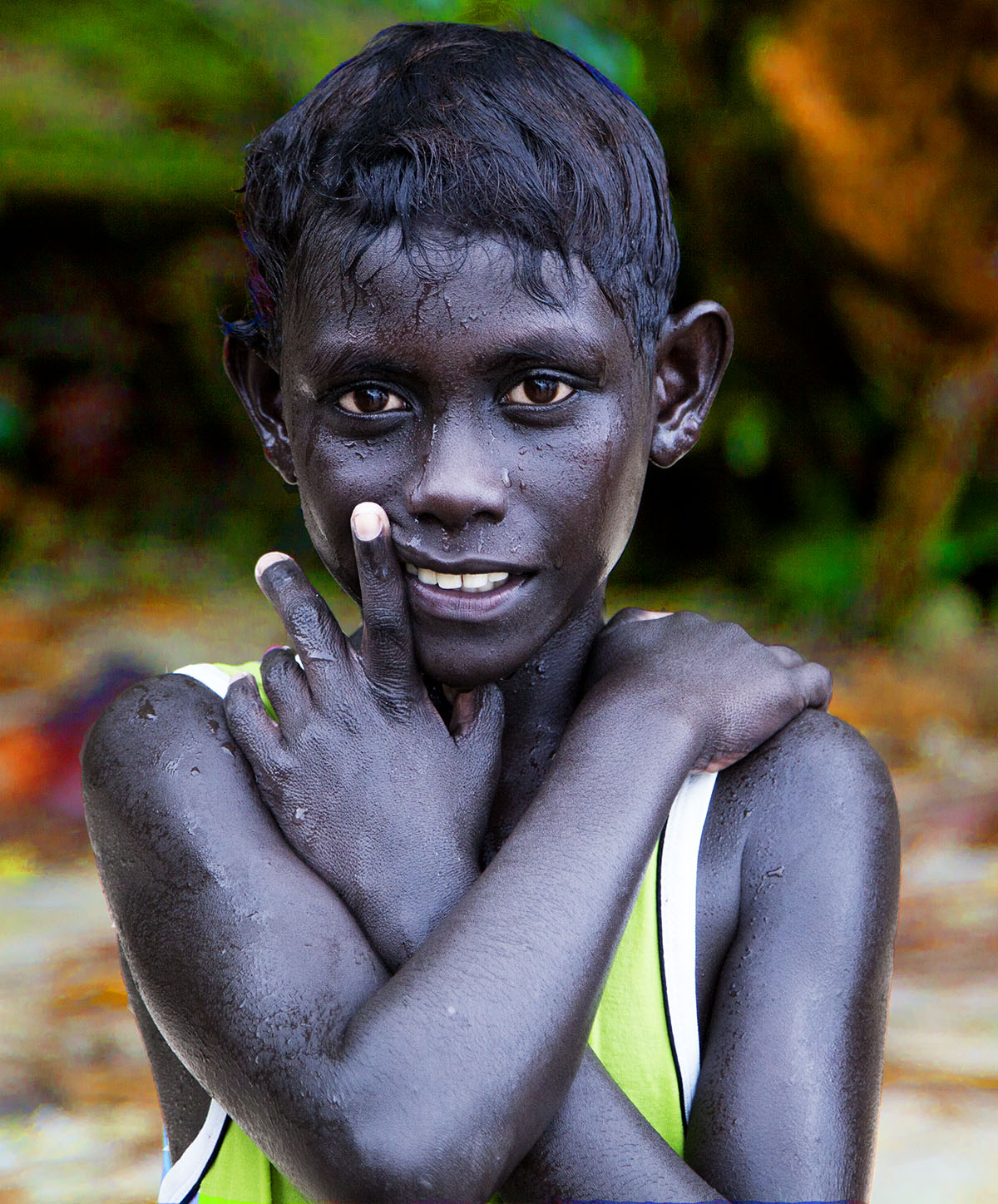
On this note, that the dog ate the scales, SoPac II came to an end. I planned a return, but next time I was determined to have some technical means at my disposal. A way to look deep underwater.
